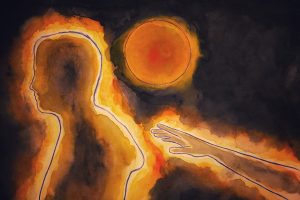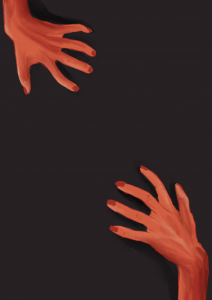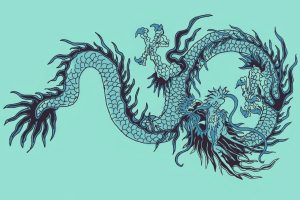Why does my Dad still mow the lawn?
by Harry Buller | April 23, 2024
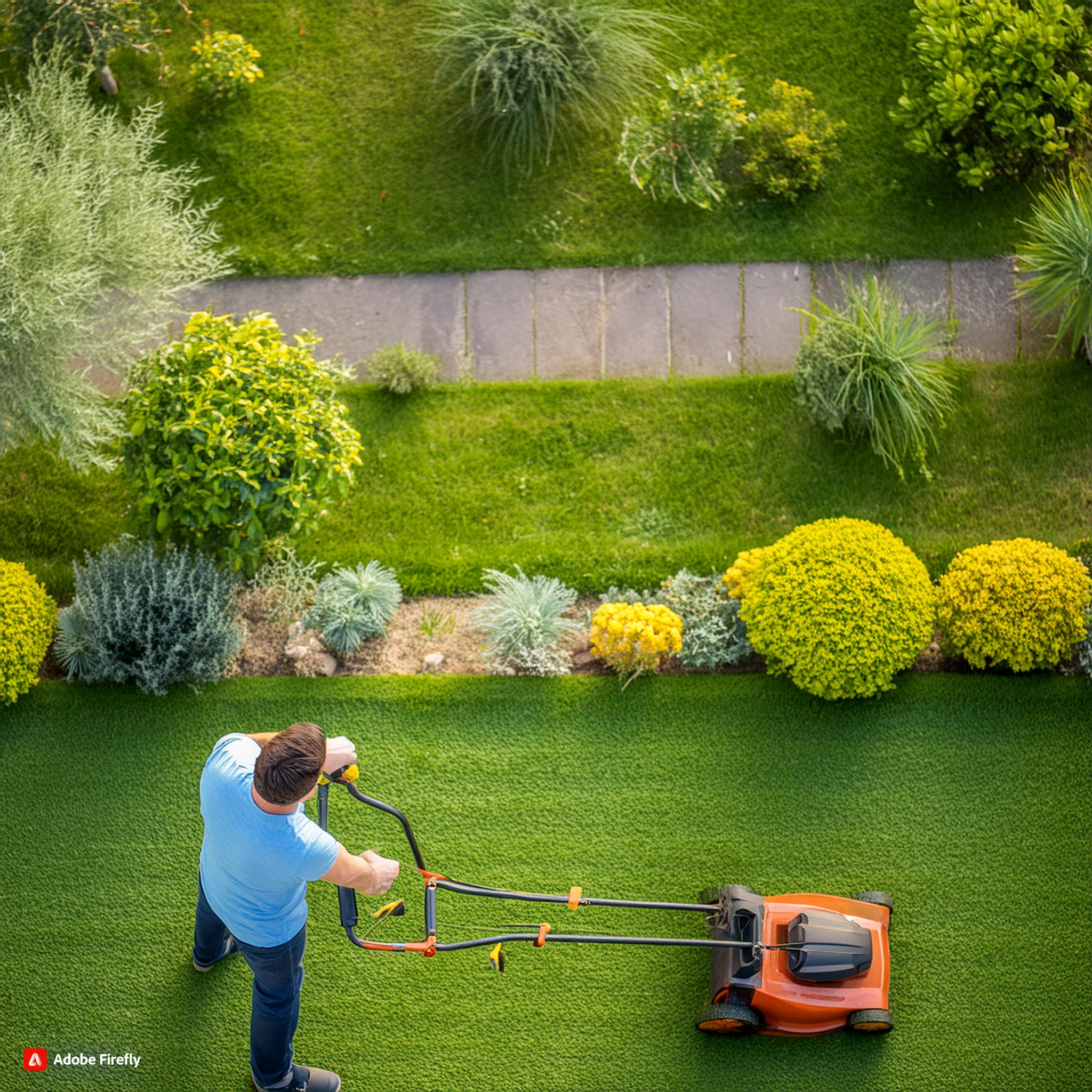
Cutting-Edge Creativity: AI Artistry and Lawnscapes
At least once a week, my dad goes out to meticulously feed, mow, or otherwise tend to our lawn. The time he puts into it really shows; it’s a rich green and grows so quickly even our gluttonous rabbit can’t graze it all (and he tries). It’s pristine. Yet, once summer rolls around, in spite of my dad’s best efforts, our luscious, gorgeous lawn will turn yellow, dry out and die, erasing any evidence of my dad’s many, many hours of work. All the while, our neighbour’s newly laid, aggressively green, plastic AstroTurf will be just as green as it was in spring. Surely a better result with less effort? A good deal? So, why on earth is my dad still bothering? Let’s save us all the trouble, rip it up, lay down the plastic and kick up our feet.
With the advent of technology, there is no longer any need to bother with difficult or laborious processes like mowing the lawn, when with the push of a button or the laying of some AstroTurf, machines can do the job more efficiently than humans could ever hope to. Demand for ever more productive technology has resulted in the rapid development of artificial intelligence. AI has been sold to us by tech barons (praise be to the great Zuck) on the basis of its efficiency. AI is advancing rapidly and shows no sign of stopping. The technology that, a year ago, struggled to generate a convincing hand, can now generate aesthetically pleasing art works with a few prompts, or produce realistic video on command.
What is the point then, for our artists? Job done, pack up the paint and head home? In the time it took you to create your magnum opus, an AI generator has churned out thousands of stunningly rendered artworks. Let’s face it, making art is a lot of hard work. Revision after revision, rewrite after rewrite – hell, you might even end up throwing out the whole project. When the same “quality” of product can be achieved in seconds by a machine, one is tempted to think: what a waste of time. But, as I learnt from confronting my dad and his lawn with such existentialist aesthetic qualms: “the secret to life is earned happiness.”
It’s that old cliché: the journey, not the destination. This is the mistake of AI art; why those superficially impressive, and maybe even beautiful pictures that took seconds to produce can never really be moving – because no one was moved to make them. No one has to struggle to make it, the AI never had to go out and buy the paint, never had to mix it or cover up its past work, never worried if what it had made was good enough – those little chores that make up any great endeavour. It just made it. A final product ready for consumption, without that little trace of its creator’s soul and passion left within, the secret to any truly moving artwork. There is great joy and emotion within the creative process that AI denies us. AI can never replicate these little hard earnt pleasures.
Struggle and anxiety, however, are not necessary for good art. A talented artist may create an impressive artwork, with little struggle or anxiety about the quality. Confident in their ability, their artwork may still be impactful and beautiful. Although AI does not engage with the creative process, if the final result is still pleasing to the consumer, then is it art? One might say, beauty is ultimately in the eye of the beholder, and that art is ultimately a subjective experience. Therefore, the experience of the artist themselves with the creative process may be irrelevant to the final experience, from the consumer perspective, of their art. However, this fails to grasp why we create art, and typifies a society that has become obsessed with consumer experience, discounting the experience of production. If an artist is not engaging with the creative process, and the necessary struggles, self-reflection and joy of that process, then they are not, in any relevant sense, creating. Therefore, their product cannot be art; it can at best be a recycling of the creative endeavours of others. AI art, like plastic grass, is only an imitation of something greater and more natural than itself. The product of AI, whilst potentially pleasing from a consumer perspective, is an amalgamation of past works, which it draws from the pool of source material, provided by its programmers. As a result, there is nothing new, no creation, no ‘art’.
Maybe I’m romanticising the creative process. Maybe, if Van Gogh had ChatGPT saved to his browser, we could have got Starry Night with a little prompting, and he could keep his ear. Maybe, Jim Morrison and the rest of the 27 Club would still be alive if they could AI generate lyrics. There is a great deal of insecurity in creation – perhaps because we put a little piece of ourselves into it. Let’s spare ourselves the anxiety and go on AI generating. Why not lay down the AstroTurf while we’re at it!
Technology tempts us to forget that not everything is meant to be easy. When it is the difficulty of a thing that often makes it worthwhile, that makes it rewarding. Work began on the Sagrada Família in Barcelona in 1882, today it remains the largest unfinished Catholic church in the world. Having survived civil war, two world wars and Francoist dictatorship, it is scheduled to be completed in 2026. Great projects demand from us, great effort. It is within the difficulty and anxiety of the creative process that we are forced to confront ourselves and exorcise parts of us out into the open, to be incorporated within whatever artistic expression we choose. In the words of Kurt Vonnegut to some students not all that dissimilar from us, “practice any art… not to get money and fame, but to experience becoming, to find out what’s inside you, to make your soul grow.” Becoming is not an easy experience, and often not a comfortable one, but becoming is what AI is incapable of experiencing, and is therefore incapable of really, truly creating. What is not capable of feeling is not capable of creating.
In the artificial dystopia of a Brave New World imagined by Aldous Huxley, the citizens take a drug, Soma, to escape reality. AI provides us with soma for our creative faculties, allowing us to be presented with superficially beautiful things, but denies the soul, the struggle and satisfaction of the creative process. In the same way that plastic grass can never replace the feeling of real grass, AI can never replace real art. It’s not like AI doesn’t have its place; plastic grass after all makes for an easy to maintain football pitch and AI proves helpful if you’re struggling for what to title an article – but it cannot and will not usurp the place of the artist. We will continue to create, and struggle, and feel, whilst AI will imitate and regurgitate and recycle what has come before. Ultimately, the hard work of human artists will be rewarded. After all, if you’re not prepared to mow the lawn, you’ll never know the pleasure of freshly cut grass. ∎
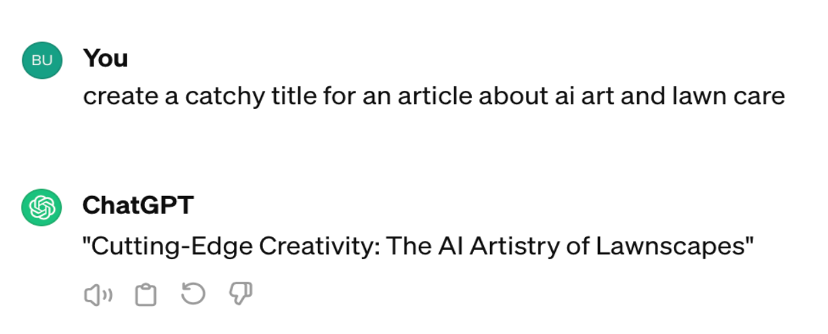
Words by Harry Buller. Image courtesy of Adobe Firefly.
